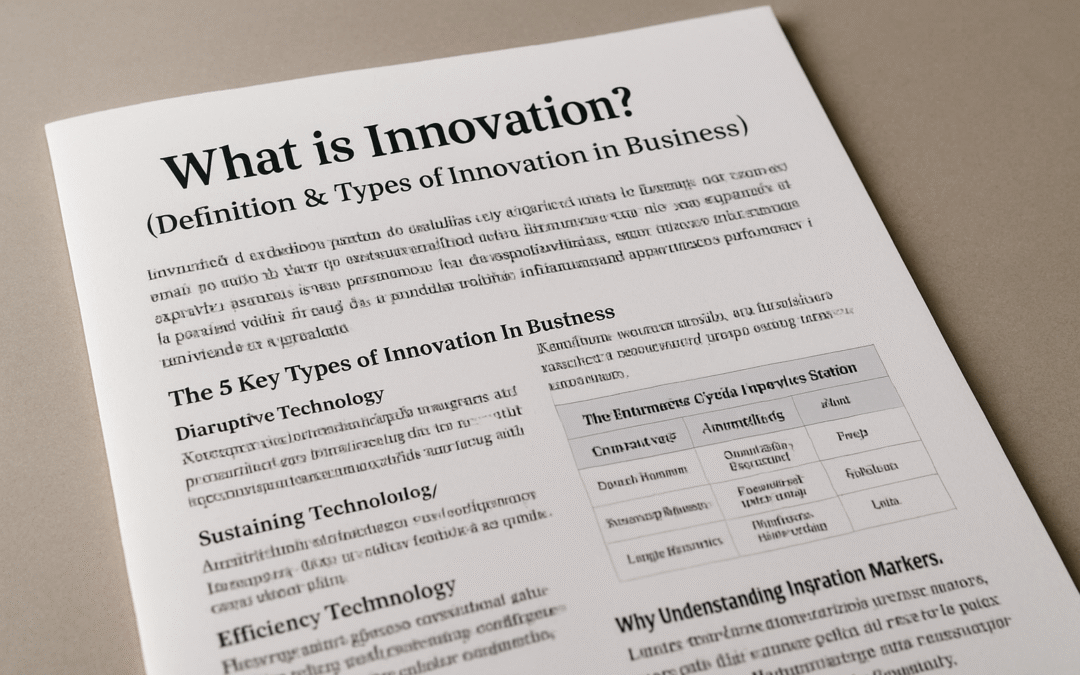Innovation is the continuous process of creating new or improved solutions that enhance value for customers and give businesses a competitive edge. It’s not a one-time invention, but an ongoing collaboration between teams seeking to solve real problems. Innovation helps improve existing products (sustaining), unlock entirely new markets (disruptive), or increase operational performance (efficiency).
By building a culture of innovation, companies stay adaptable, customer-focused, and ahead of market shifts.
The 3 Key Types of Innovation in Business
Disruptive Technology
Disruptive innovations introduce simpler, cheaper, and more accessible products or services that initially serve underserved markets—but eventually overtake industry leaders. These innovations often arise from small startups unburdened by legacy systems.
Example: Netflix disrupting Blockbuster.
Sustaining Technology
Sustaining innovations improve performance for existing customers. Common among medium businesses, they include feature upgrades, quality enhancements, or better service delivery.
Example: Apple improving iPhones annually.
Efficiency Technology
Efficiency innovations focus on internal gains—cutting costs, automating workflows, or improving supply chains. These are more common in large enterprises.
Example: Amazon’s warehouse automation.
Why Understanding Innovation Matters
Understanding the types of innovation helps business owners, managers, and entrepreneurs choose the right strategies to grow their business. While sustaining innovation keeps you relevant, disruptive technologies drive long-term growth, and efficiency technologies improve sustainability.
“The reason why it is so difficult for existing firms to capitalize on disruptive innovations is that their processes and their business model that make them good at the existing business actually make them bad at competing for the disruption.” – Clayton Christensen
Knowing which type of innovation your business is pursuing helps align internal efforts with long-term goals. While sustaining and efficiency innovation support short-term success, only disruptive innovation can drive true market leadership.
The Innovation Cycle: From Growth to Decline
| Business Size | Innovation Focus | Risk |
|---|---|---|
| Small Business | Disruptive Technology | High |
| Medium Business | Sustaining Technology | Medium |
| Large Business | Efficiency Technology | Low |
However, here lies the trap: businesses that over-focus on efficiency often stagnate. Many react by investing in startups, accelerators, or innovation hubs—but without structural change, these efforts often fail. True innovation stems from continually addressing unmet customer needs—not just optimizing internal systems.
Key Takeaways
- Innovation is not just invention—it’s a continuous process of solving real-world problems.
- Disruptive innovation creates new markets by serving overlooked customer segments.
- Sustaining and efficiency innovations are important but insufficient alone for long-term growth.
- Successful businesses actively balance all three types of innovation.

